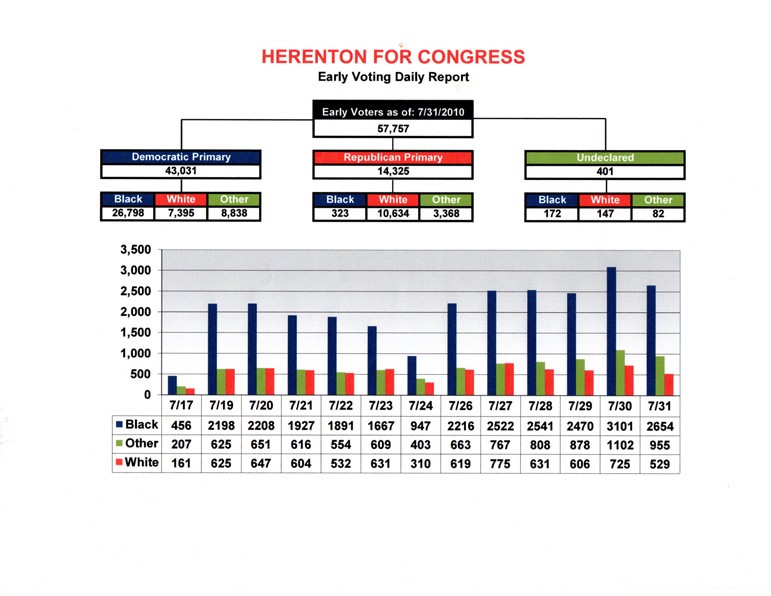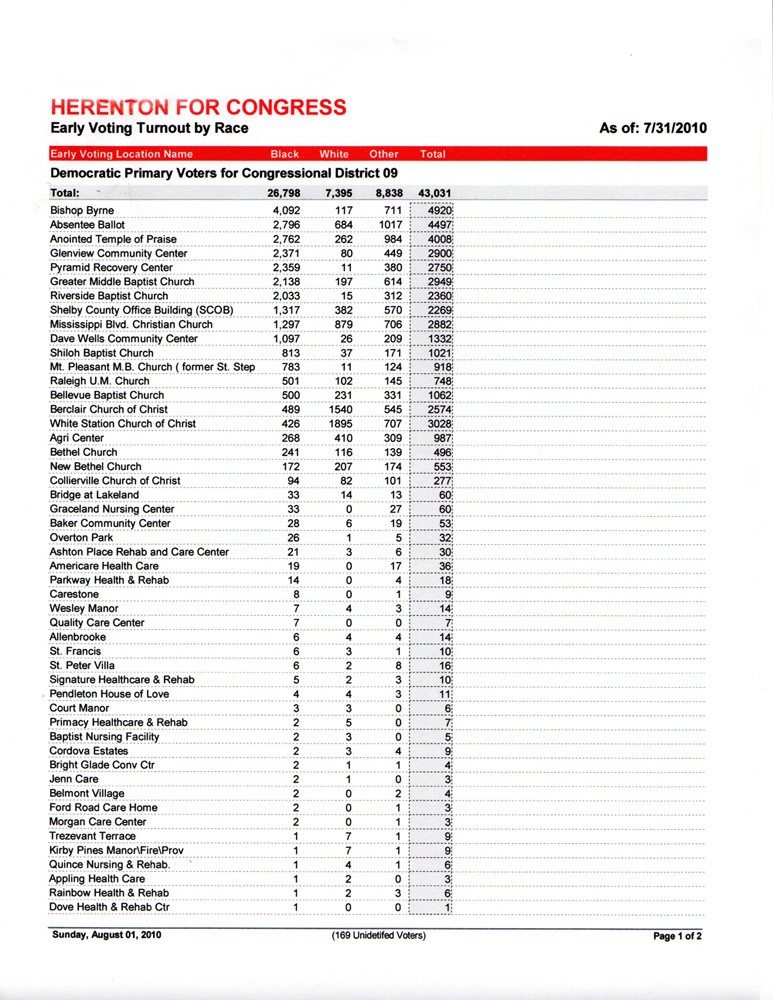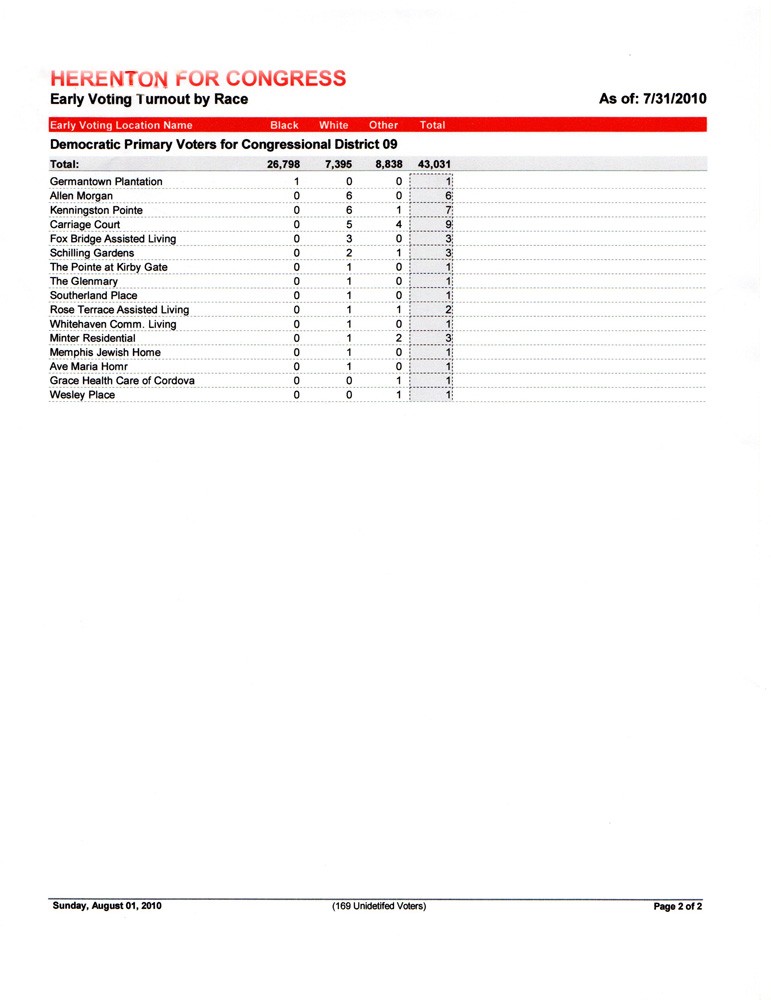
- JB
- Herenton with his data sheets
The Willie Herenton who met with the media on Monday, with three more days to go before the 9th District Democratic primary is decided, was not the provocative, chip-on-shoulder politician they’ve seen in this election year but a calmly argumentative professional.
The former school superintendent and mayor said he had called the press conference to correct what he said were “erroneous” perceptions of the status of his contest with incumbent congressman Steve Cohen. He put the blame for such public misperception as might exist on the media — “in particular, the printed media” — for focusing on countywide early-voting data instead of patterns within the 9th District “subset.”
Herenton declared bluntly, “Since I am so distrustful of the printed media, I would have to conclude that this was not inadvertently done but was seriously contemplated by the media. “ The print media “with the aid of a biased poll, in my opinion, has tried very hard to persuade the public that Herenton is behind and Cohen is well ahead.”
(The former mayor did not specify which poll he meant — whether it was one by John Bakke with the Ethridge polling firm or another by pollster Berje Yacoubian.)
The reality, Herenton said, was “that Cohen is trailing at least with a 3-to-1 margin — especially in our highest and best performing black precincts.” He presented tables designed to show a large and preponderantly African-American turnout at specific box locations. (The conclusions and data are apparently the ones he alluded to in a fiery weekend speech in North Memphis.)
A key part of Herenton’s case was that the 8,838 early voters reported in Election Commission figures as “other” rather than black or white were preponderantly African-American. “We know that many African Americans, for a variety of reasons, have decided they don’t want to indicate race.”
An understanding of that fact would underscore the disproportion between black and white voters in the 9th District, he said. (Those figures show that, of 43,031 early voters in the Democratic primary, 26,798 were black, and 7,395 were white; treating the 8,838 voters in the “other” category as essentially black would, as Herenton said, dramatically alter the ratio.)
Media accounts suggesting that whites and Republicans were voting in unusually high numbers were irrelevant to the 9th District, where the voting pattern was “a totally different story.”
Herenton further pointed out that in 2007, he garnered his lowest number of votes as a mayoral candidate, some 65,000 votes. That compared to 55,000, the highest number of votes given Cohen in his congressional primary with Nikki Tinker in 2008.
In a question-and-answer session with reporters, Herenton acknowledged that his own projection of at least a 3-to-1 victory over Cohen did not derive from a professional pollster’s conclusions. “I don’t believe in pollsters. I’m my own best pollster,” he said.
He boasted his own skills at “disaggregating” data and his familiarity with statistics — though he conceded he’d made a ‘B’ in his statistics course at the doctoral level.
He said he was “the same candidate, whether as mayor or as congressman” that 9th District voters had always trusted, though he also conceded, “Not everyone is in love with me.”
video of Herenton’s presentation:
 JB
JB
Herenton analysis of voting figures

Herenton figures of early voting at designated boxes (One)

Herenton presentation of voting figures at selected boxes (Two)